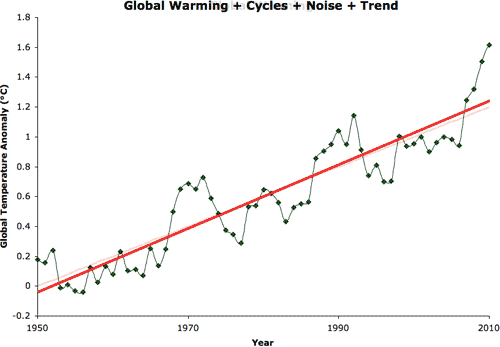 Arguments
Arguments
 Software
Software
 Resources
Comments
Resources
Comments
 The Consensus Project
The Consensus Project
 Translations
Translations
 About
Support
About
Support


Latest Posts
- Skeptical Science New Research for Week #52 2025
- How climate change broke the Pacific Northwest’s plumbing
- Fact brief - Do solar panels generate more waste than fossil fuels?
- Zeke's 2026 and 2027 global temperature forecasts
- 2025 SkS Weekly Climate Change & Global Warming News Roundup #51
- Skeptical Science New Research for Week #51 2025
- What are the causes of recent record-high global temperatures?
- Fact brief - Are toxic heavy metals from solar panels posing a threat to human health?
- Emergence vs Detection & Attribution
- 2025 SkS Weekly Climate Change & Global Warming News Roundup #50
- Skeptical Science New Research for Week #50 2025
- The rest of the world is lapping the U.S. in the EV race
- Fact brief - Are electromagnetic fields from solar farms harmful to human health?
- Comparing climate models with observations
- 2025 SkS Weekly Climate Change & Global Warming News Roundup #49
- Skeptical Science New Research for Week #49 2025
- Climate Adam & Dr Gilbz - Paris Climate Agreement At 10: Did It Do Anything?
- Fact brief - Does the recent slowdown in Arctic sea-ice extent loss disprove human-caused warming?
- Why the chemtrail conspiracy theory lingers and grows – and why Tucker Carlson is talking about it
- 2025 SkS Weekly Climate Change & Global Warming News Roundup #48
- Skeptical Science New Research for Week #48 2025
- Consensus machines
- Just have a Think - How an African energy revolution could save ALL of us.
- A girl’s grades drop every summer. There’s an alarming explanation.
- 2025 SkS Weekly Climate Change & Global Warming News Roundup #47
- Fact brief - Are changes in solar activity causing climate change?
- Skeptical Science New Research for Week #47 2025
- Exploring newly released estimates of current policy warming
- Climate Adam - Why the Climate Crisis is a Health Crisis
- Super pollutants are trendy, but we should be careful how we use them
Step Function

For a video version of this animation, click here
This animation refutes the myth that the global temperature record is somehow explained by "climate shifts" or "step functions", when in reality the record is physically explained by an underlying long-term trend of increasing temperature (global warming caused by human greenhouse gas emissions) plus the superimposed effects of noise and natural cycles such as the El Nino Southern Oscillation (ENSO) and the solar sunspot cycle. Using simulated temperature data to illustrate how these physical factors combine to explain the appearance of the real temperature record, the frames show: 1) a 0.2°C per decade global warming trend; 2) two "natural cycles" of amplitude 0.15°C and periods of 10 and 20 years; 3) random noise of amplitude 0.07°C; 4) the sum of the warming trend, cycles and noise (the simulated temperature record); 5) a fit to the sum using a step function given by 3 linear trends from 1950-1963, 1967-1986, and 1987-2003 (light blue); and 6) a linear fit to the entire time period 1950-2010, which has slope 0.21°C per decade (red). The fit to the complete simulated temperature record in frame 6 is almost identical to the assumed global warming trend of 0.2°C in frame 1, just like the situation in the real world where short-term cycles and noise don't contribute to the long-term global warming trend.
SkS Resources that use this Graphic
- Global Warming and Step Functions
- Going Down the Up Escalator, Part 2
- Fred Singer - Not an American Thinker
- A Big Picture Look at Global Warming
Images
Printable Version | Back to Graphics by Skeptical Science
|
|
Skeptical Science Graphics by Skeptical Science is licensed under a Creative Commons Attribution 4.0 International License. |
THE ESCALATOR

(free to republish)
























































